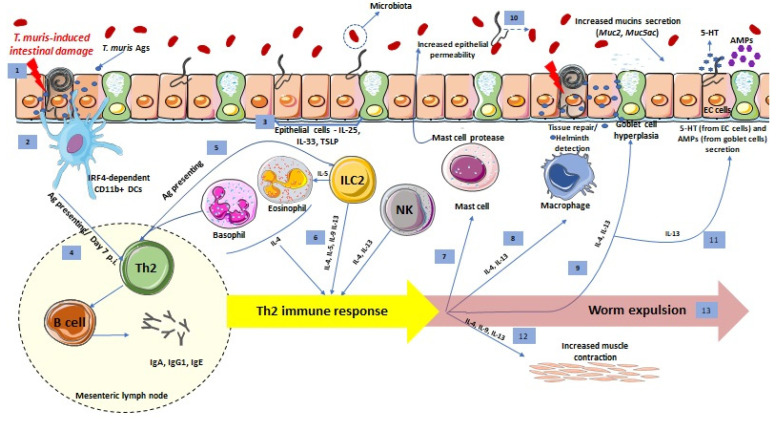Figure 1.
Host intestinal immune response against T. muris infection. Representative schematic of the helminth detection and immune response induction. (1) T. muris larvae breach the intestinal epithelium and release Ags. (2) IRF4-dependent CD11b+ DCs up-take T. muris Ags (3) Upon T. muris invasion, intestinal epithelial cells produce alarmins that recruit immune cells. (4) DCs present T. muris Ags to adaptive immune cells in the mesenteric lymph node on day 7 p.i. and activate Th2 cells (the main source of Th2 cytokines). Th2 cells stimulate B cells that synthesize and secret IgA, IgG1 and IgE. (5) Innate immune cells also present Ags to adaptive immune cells in the mesenteric lymph node. (6) Innate immune cells (basophils, eosinophils, ILC2s and NK cells) release Th2 cytokines and promote Th2 immune response. The effects of Th2 immune response are: (7) Activation of mast cells to release mast cell protease, which increases epithelial cell permeability, (8) development of alternatively activated macrophages, which cause tissue repair and helminth detection, (9) goblet cell hyperplasia and increased mucins (Muc2 and Muc5ac) secretion. (10) T. muris affect microbiota composition, which subsequently can influence mucin secretion and barrier function, (11) increase production of 5-HT and AMPs from EC cells and goblet cells, respectively, and (12) increase smooth muscle contraction. (13) All these Th2 responses lead to T. muris expulsion.

